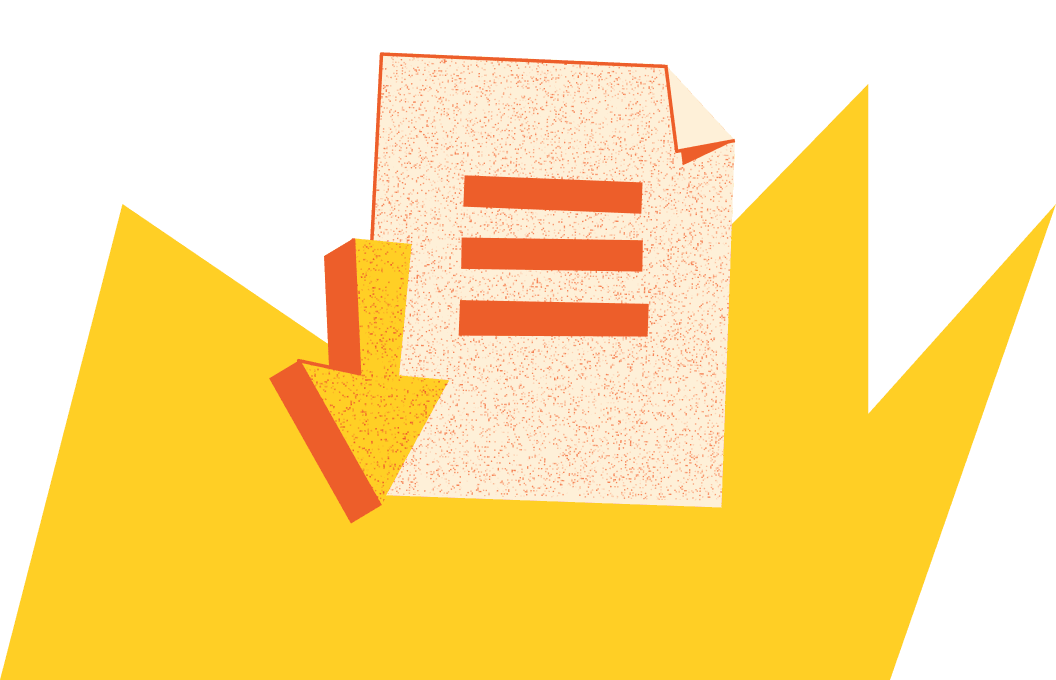Template
Performance Improvement Plan Template Word
Global HR

Get the resource for free
Performance improvement plan template overview
A Performance Improvement Plan (PIP) is a strategic document organizations use to address and amend employee performance deficiencies.
A PIP offers a structured framework for constructive dialogue between managers and team members who do not meet predetermined work performance standards.
The primary objective of this template is to foster measurable and sustainable improvement through specific, achievable actions that align employee performance with the organization's expectations.
The PIP template includes:
- Names and timeline: Fill in the employee name, manager name, and expected start and end date of the PIP
- Main objectives: Clearly articulate the desired outcomes of the PIP (i.e., improvement goals), establishing what success looks like at the end of the improvement period
- Consequences of inaction: Outline the potential repercussions if the employee does not meet the plan's objectives, emphasizing the importance of adherence to the plan for the employee's future in the company
- Performance improvement planning: Create a structured and effective action plan, including setting realistic and timely objectives linked to areas of concern
- Follow-up schedule: Schedule regular check-ins to discuss progress, adjust the plan as necessary, and provide continuous feedback
- Check-in meetings: Define the frequency and structure of meetings to ensure ongoing communication and support throughout the PIP process
- Manager and employee acknowledgments: Ensure both parties affirm their understanding of the terms of the PIP, responsibilities, and commitment to the improvement journey
How to use this PIP Word template
This PIP template is a supportive tool to enhance employee performance and align workers with organizational goals.
The template includes instructions to guide managers and employees when filling in and implementing the plan.
There is guidance on:
- Identifying specific areas to focus on (e.g., latest performance reviews, goal achievement data, previous development plans),
- Structuring the performance action plan
- Defining improvement activities
- Setting milestones throughout the process
- Documenting progress.
Note that you should tailor this free PIP template to adhere to local labor laws and organizational policies. We advise consulting with your HR team or legal experts to ensure compliance and effectiveness in applying this plan.
FAQs
What is a PIP in Word?
A performance improvement plan (PIP), in the context of employment, refers to a formal document outlining specific actions and goals designed to help an underperforming employee improve their performance to meet expected standards or address areas of deficiency.
What does a performance improvement plan look like?
A typical performance improvement plan includes setting clear expectations and objectives, measurable goals, a timeline for improvement, and consequences for failure to meet expectations. It may also outline support, action steps, and resources available to the employee during the improvement period.
How long should a PIP be?
The timeframe of a PIP can vary depending on the nature of the performance issues and the company's performance management policies. However, they typically range from 30 to 90 days, allowing sufficient time for the employee to address the root cause of poor performance and demonstrate improvement.
While a 30-day PIP is sometimes implemented, it is generally considered the minimum duration and might not be sufficient for all situations. Whether 30 days is enough depends on several factors, including the nature of the performance issues, the complexity of the role, and the specific objectives that need to be achieved.
For example, for relatively straightforward issues like punctuality, attendance, or adherence to company policies, 30 days might be sufficient to observe improvements.
In contrast, positions that require deep expertise, complex problem-solving, or strategic decision-making often necessitate a longer PIP period to allow the employee enough time to show tangible improvements.
Does PIP affect future employment?
The existence of a PIP may impact future employment opportunities, as it indicates that the employee's performance did not meet expectations and required formal intervention. However, completing a PIP and demonstrating improvement can mitigate the negative impact.
How do you start a PIP conversation?
Starting a PIP conversation involves scheduling a private meeting with the employee to discuss performance concerns respectfully and constructively. It's essential to approach the conversation empathetically, clearly communicate expectations, and provide support to help the employee succeed.
How do you structure a performance plan?
You should structure a performance improvement plan to identify areas of improvement, set specific and measurable objectives, outline a timeline for achieving those, and specify consequences for not meeting expectations. Additionally, you should include regular check-ins and opportunities for feedback to track progress.
What three things would you always include in a performance improvement plan?
Three essential elements to include in a performance improvement plan are:
- Clear performance expectations and goals: Clearly outline the areas where the employee needs to improve and specify measurable objectives
- Support and resources: Identify the support, training, or resources available to help employees meet their goals, such as additional training, mentoring, or coaching
- Consequences for non-compliance: Communicate the potential consequences of failing to meet the expectations outlined in the plan, which may include further disciplinary action or termination of employment